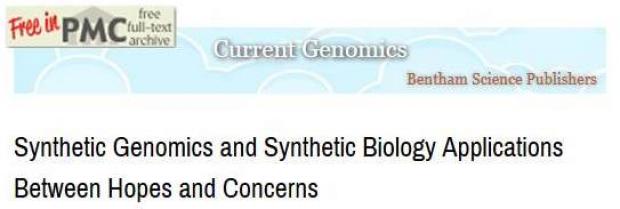
Review Article on Synthetic Biology Applications and their Potential Benefits and Risks
Submitted by harald_kit on
The article provides an overview on recent progress in biomedical and biotechnological applications of synthetic genomics and synthetic biology as well as on arguments and evidence related to their possible benefits and risks.
New organisms and biological systems designed to satisfy human needs are among the aims of synthetic genomics and synthetic biology. Synthetic biology seeks to model and construct biological components, functions and organisms that do not exist in nature or to redesign existing biological systems to perform new functions. Synthetic genomics, on the other hand, encompasses technologies for the generation of chemically-synthesized whole genomes or larger parts of genomes, allowing to simultaneously engineer a myriad of changes to the genetic material of organisms. Engineering complex functions or new organisms in synthetic biology are thus progressively becoming dependent on and converging with synthetic genomics. While applications from both areas have been predicted to offer great benefits by making possible new drugs, renewable chemicals or clean energy, they have also given rise to concerns about new safety, environmental and socio-economic risks. The article, published in the journal Current Genomics, provides an overview on possible biomedical and biotechnological applications of synthetic genomics and synthetic biology as well as on arguments and evidence related to their possible benefits and risks.
It is freely availabe and can be downloaded from PubMed Central: http://www.ncbi.nlm.nih.gov/pmc/articles/PMC3580775/.
